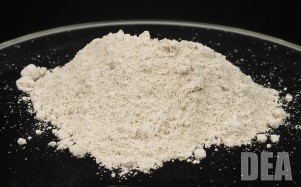Health Hazards
Heroin abuse is associated with serious health conditions, including fatal overdose, spontaneous abortion, collapsed veins, and, particularly in users who inject the drug, infectious diseases including HIV/AIDS and hepatitis.

The short-term effects of heroin abuse appear soon after a single dose and disappear in a few hours. After an injecton, the user reports reeling a surge of euphoria ("rush") accompanied by a warm flushing of the skin, a dry mouth, and heavy extremities. Following the initial euphoria, the user goes "on the nod," an alternately wakeful and drowsy state. Mental functioning becomes clouded due to the depression of the central nervous system. Long-term effects of heroin appear after repeated use over a period of time. Chronic users may develop collapsed veins, infection of the heart lining and valves, abscesses, cellulitis, and liver disease. Pulmonary complications, including various types of pneumonia, may result from the poor health condition of the abuser, as well as from heroin's depressing effects on respiration.
Heroin abuse during pregnancy and its many associated environmental factors, such as lack of prenatal care, have been associated with adverse consequences including low birth weight, an important risk factor for later developmental delay.
In addition to the effects of the drug itself, street heroin may have additives that do not readily dissolve and result in clogging the blood vessels that lead to the lungs, liver, kidneys, or brain. This can cause infection or even death of groups of cells in vital organs.
Tolerance, Addiction, and Withdrawal
With regular heroin use, tolerance develops. This means the abuser must use more heroin to achieve the same intensity of effect. As higher doses are used over time, physical dependence and addiction develop. With physical dependence, the body has adapted to the presence of the drug and withdrawal symptoms may occur if use is reduced or stopped.
Withdrawal, which in regular users can occur as early as a few hours after the last administration, produces drug craving, restlessness, muscle and bone pain, insomnia, diarrhea and vomiting, cold flashes with goose bumps ("cold turkey"), kicking movements ("kicking the habit"), and other symptoms. Major withdrawal symptoms peak between 48 and 72 hours after the last dose and subside afte rabout a week. Sudden withdrawl by heavily dependent users who are in poor health is occasionally fatal, although heroin withdrawal is considered less dangerous than alcohol or barbiturate withdrawal.
Treatment
There is a broad range of treatment options for heroin addiction, including medications as well as behavioral therapies, Science has taught us that when medication treatment is integrated with other supportive services, patients are often able to stop heroin (or other opiate) use and return to more stable and productive lives.

In November 1997, the National Institute of Health (NIH) convened a Consensus Panel on Effective Medical Treatment of Heroin Addiction. The panel of national experts concluded that opiate drug addictions are diseases of the brain and medical disorders that indeed can be treated effectively. The panel strongly recommended (1) broader access to methadone maintenance treatment programs for people who are addicted to heroin or other opiate drugs; and (2) the Federal and state regulations and other barriers impeding this access be eliminated. This panel also stressed the importance of providing substance abuse counseling, psychosocial therapies, and other supportive services to enhance the retention and successful outcomes in methadone maintenance treatment programs.
Methadone, a synthetic opiate medication that blocks the effects of heroin for about 24 hours, has a proven record of success when prescribed at a high enough dosage level for people addicted to heroin. Other approved medications are naloxone, which is used to treat cases of overdose, and naltrexo, both of which block the effects of morphine, heroin, and other opiates.
Buprenorphine is the most recent addition to the array of medications available for treating addiction to heroin and other opiates. This medication is different from methadone in that it offers less risk of addiction and can be dispensed in the privacy of a doctor's office. Seveal other medications for use in heroin treatment programs are also under study.
For the pregnant heroin abuser, methadone maintenance combined with prenatal care and a comprehensive drug treatment program can improve many of the detrimental maternal and neonatal outcomes associated with untreated heroin abuse. there is preliminary evidence that buprenorphine is also safe and effective in treating heroin dependence during pregnancy, although infants exposed to methadone or buprenorphine during pregnancy typically require treatment for withdrawal symptoms. For women who do not want or are not able to receive pharmacotherapy for their heroin addiction, detoxification from opiates during pregnancy can be accomplished with relative safety, although the likelihood of a relapse to heroin use should be considered.
There are many effective behavioral treatments available for heroin addiction. These can include residential and outpatient approaches. Several new behavioral therapies are showing particular promise for heroin addition. Contingency management therapy uses a voucher-based system, where patients earn "points" based on negative drug tests which they can exchange for items that encourage healthy living. Cognitive-behavioral interventions are designed to modify the patient's thinking expectancies, and behaviors and to increase skills coping with various life stressors.